
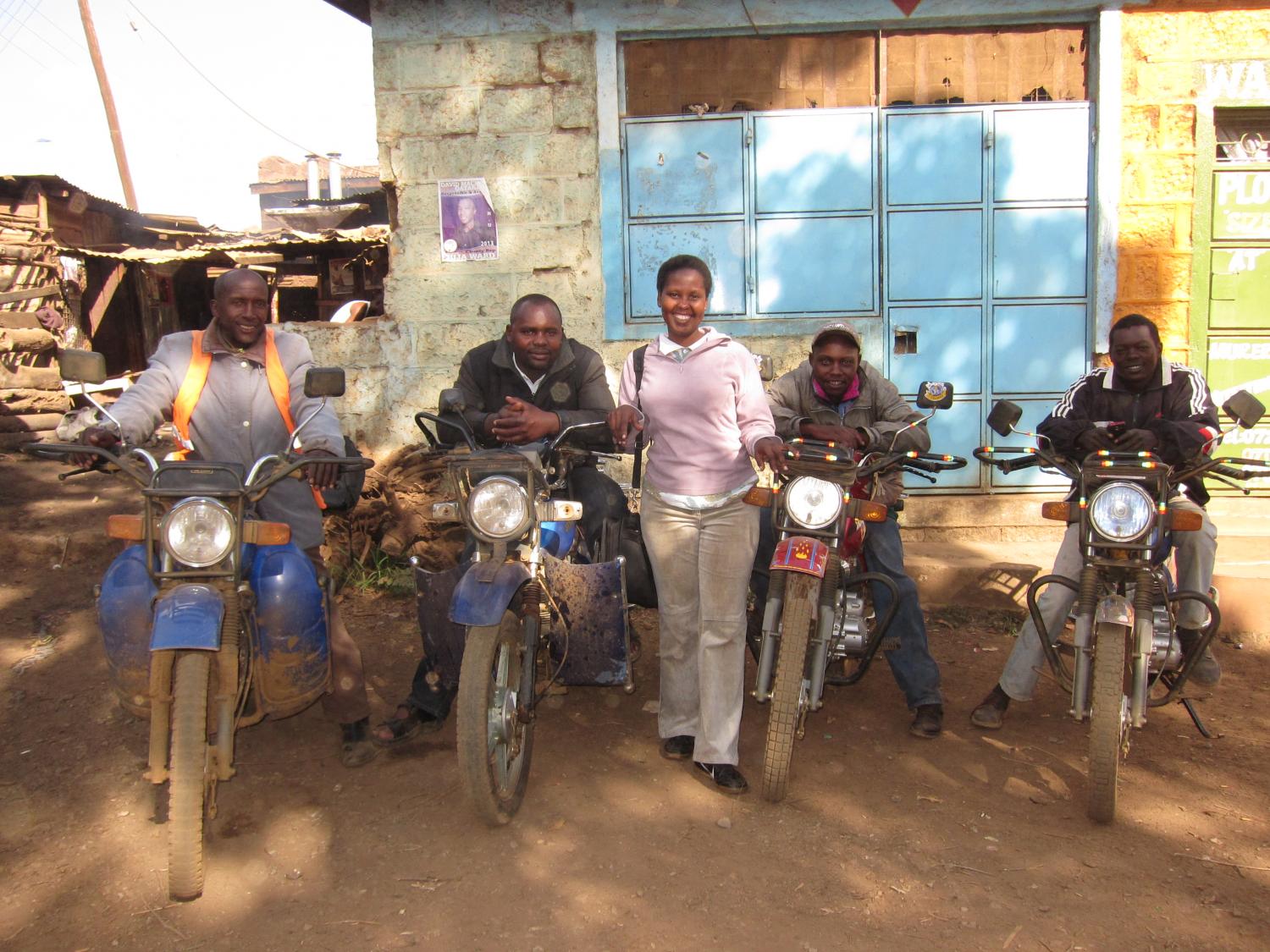
Kiva borrowers, their bikes, and their loan officer, Carol, are ready to roll in Kenya.
How did you get to work this morning? How will you get home tonight? How will you travel to see your family and friends this weekend? What was your answer? Most of us probably answer with a combination of car, plane, subway, train, bus, bicycle, or on foot. I’m sure there are a few interesting commutes involving horse rides and boats, but most of us come and go on a somewhat predetermined schedule on cars, trains and buses. Not so much in Kenya.
In Kenya, you are typically at the mercy of the shared bus, taxi, or worse yet, the circle of hell known as Nairobi traffic. On the positive side, you don’t have to be at the bus station (or stage, as they call them) at a certain time; public transport vehicles usually leave when they are full, unless you are one of the more expensive through coaches, like Easy Coach.
Over the past two months I’ve come to appreciate both the good and the bad of travel in Kenya while conducting borrower verifications over 2,600 kilometers with Kiva’s microfinance partners KADET and Juhudi Kilimo. Before you go check your Facebook page, pause and think for a minute about what this sort of transportation system means for business. How do you set up business meetings if you can’t be sure when you’ll arrive somewhere? How can you bring your goods to a large market if the road to the market is so potholed and muddy that no trucks can navigate it? How much business will your shop lose while you travel the two hours into the nearest town to visit the doctor? In Kenya, only a little over 14 percent of roads are paved in some way, according to World Bank data (compare this to the United States with a little over 67 paved). On major routes, like Mombasa to Nairobi, the journey takes approximately eight to ten hours; an equivalent journey in the United States, between Dallas and Houston, for example, takes about four hours. Despite hurdles like these, entrepreneurs are working diligently to improve their lives in Kenya. I’ve never seen the likes of them—it is not out of the norm to meet grandmothers that have retired from banking but still farm, sell honey, run womens’ business education groups and lead Sunday school classes.
Here are the two mechanized vehicles most of our borrowers use most:
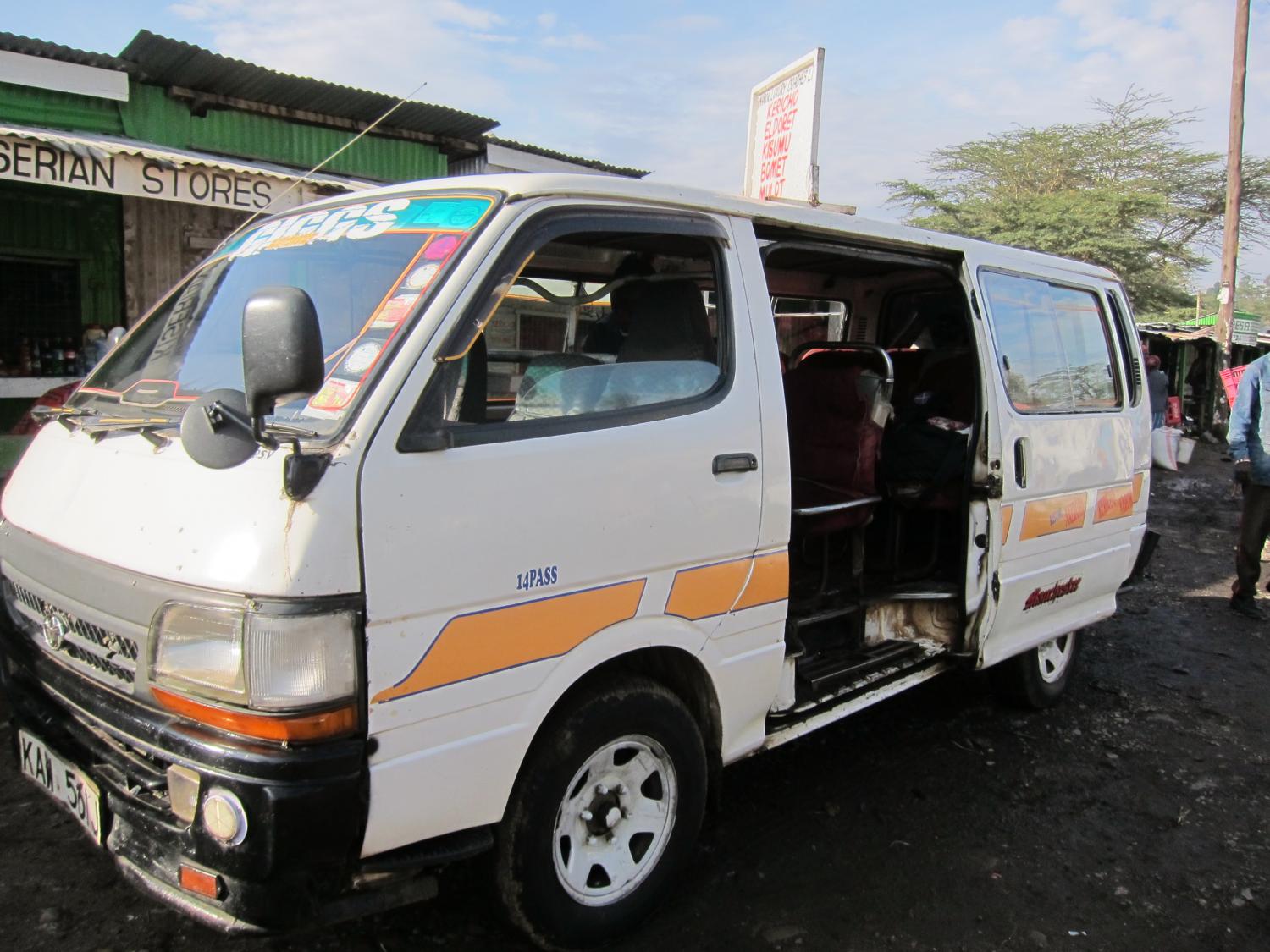
One of the many matatus I took to see our borrowers.
Matatus.
Matatus are public minibuses run by private operators, often cooperatives. They are halfway between a minivan and a passenger van and are supposed to hold 14 passengers (15 including the driver). To me, the best spot is the front seat next to the door followed closely by the middle seat next to the driver. The Lonely Planet guidebook, however, cautions against settling in up front: “Wherever you go, remember that most matatu crashes are head-on collisions – under no circumstances should you sit in the ‘death seat’ next to the matatu driver. Play it safe and sit in the middle seats away from the window.” With that in mind, I reluctantly resign myself to sitting in the middle, despite motion sickness.
The good and bad:
- Cheap. Usually about 100-400 Kenyan Shillings for a ride of 1-4 hours or longer.
- Leave when they are full, so no time schedule.
- Travel to almost everywhere.
- Gives you the opportunity to meet locals.
- In rural areas off the asphalt roads and away from the police, they stop about every 5-20 minutes to pick-up or drop-off passengers and routinely disregard the “14 passenger” rule, which is conveniently painted on the outside of the van. (My personal record is 22 large-boned adults or 24 total souls including 19 adults, three teenage girls, one elementary-aged boy, and one toddler. Keep in mind they only pick up this many people on unpaved roads, so that doubles the fun. Oh, and the rule about quiet radios also goes out the window (literally) as they amp up the radio as loud as possible.)
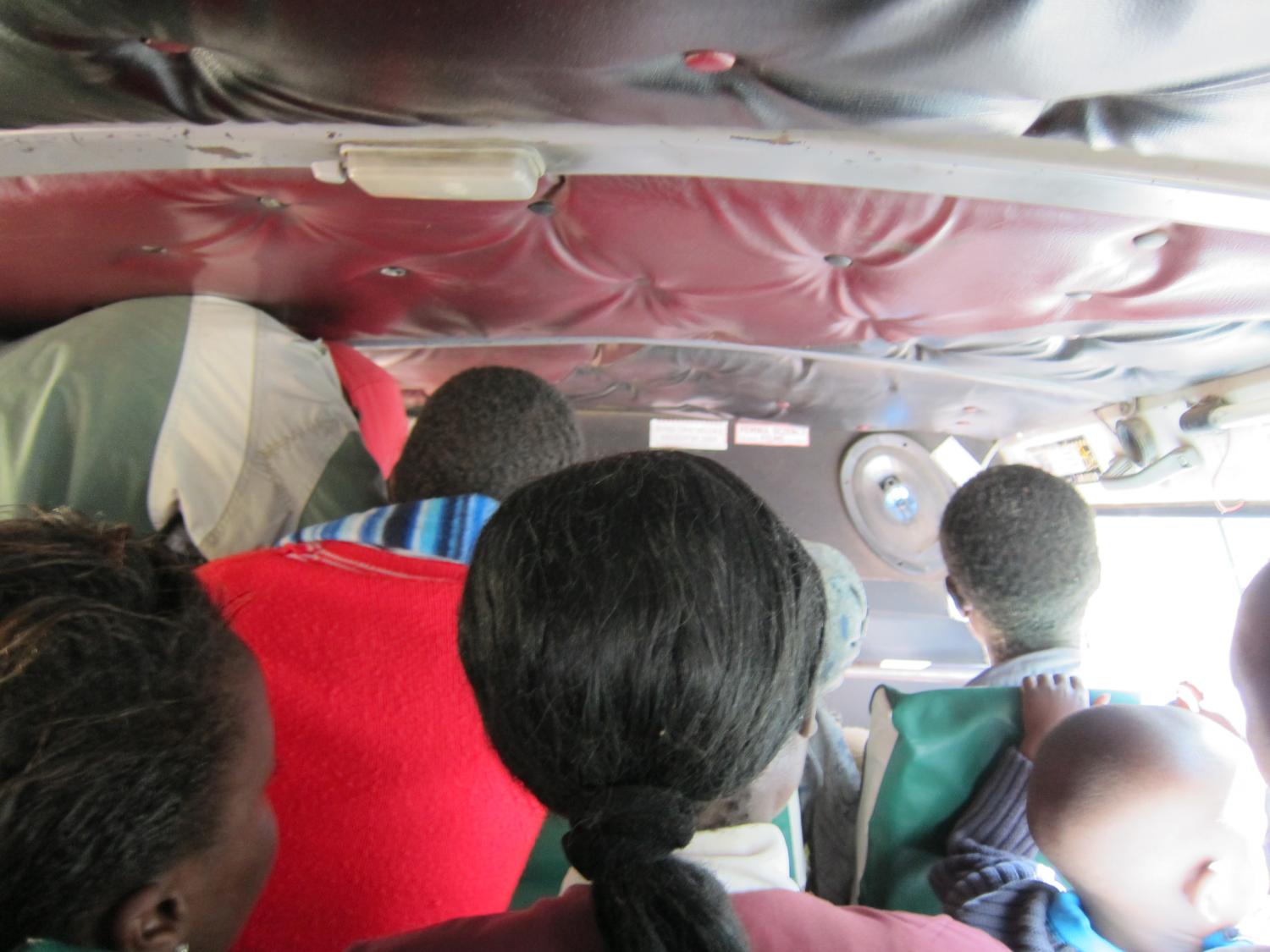
The inside of an overcrowded matatu. You don't want to be here.
Boda Bodas.
Boda bodas are the name for a motorcycle taxi (not to be confused with piki piki, the word for the actual motorcycle).
The good and the bad:
- Provides relatively easy access to rural areas.
- Boda bodas can be picked up on almost every block and can take you to small villages on the spot. No waiting for the vehicle to fill in order to leave.
- They can easily navigate roads and tracks that prove difficult to impossible for even 4x4 vehicles.
- Cheap!
- Fun! Wind in your hair, sun on your skin, bumping along at a relatively safe 5-20 mph.
- Dusty, especially when a truck or matatu overtakes you.
- Light skin…equatorial sun…you know where this is going…sunburns
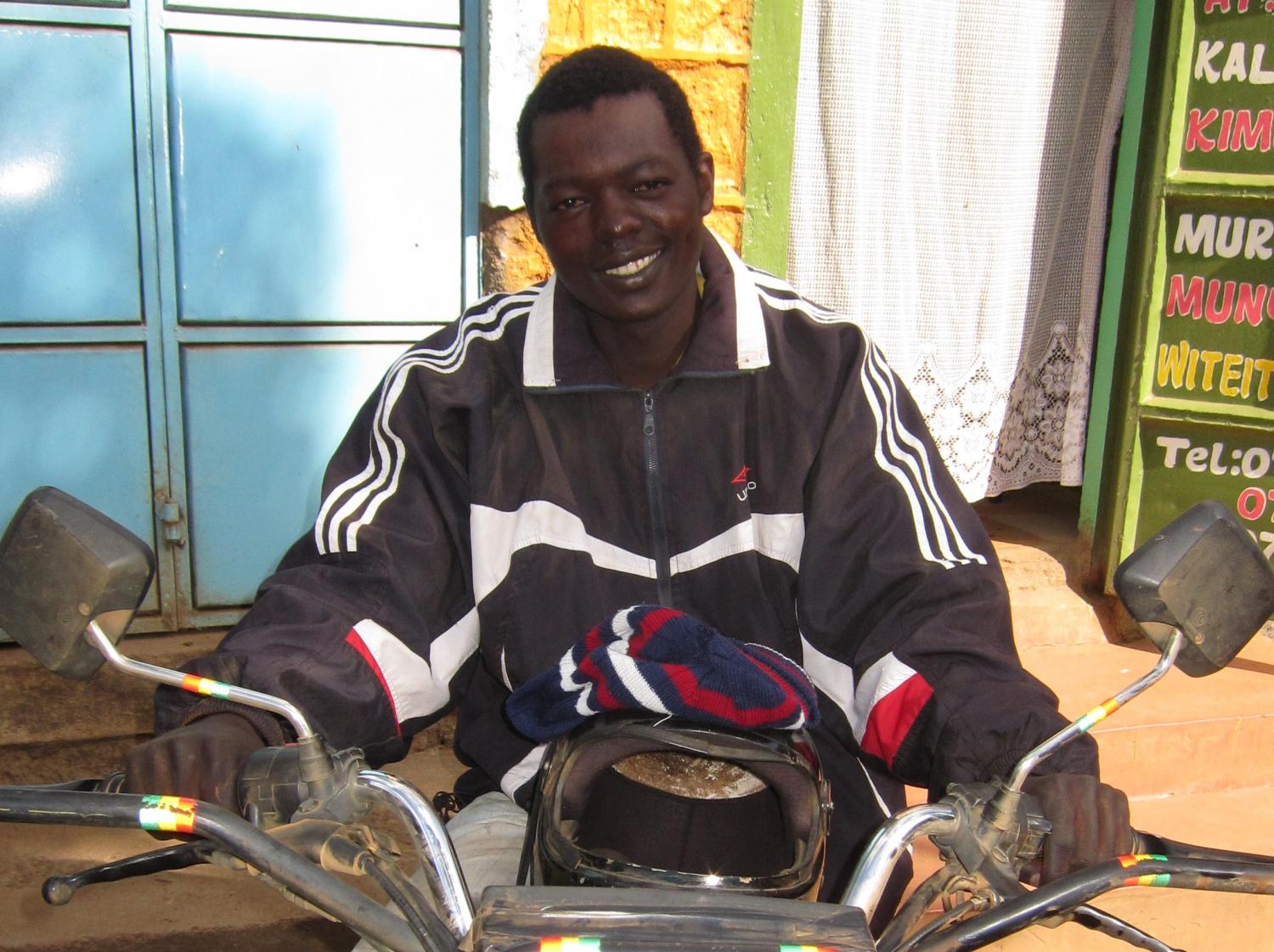
Joseph with the piki piki he purchased with a Kiva loan.
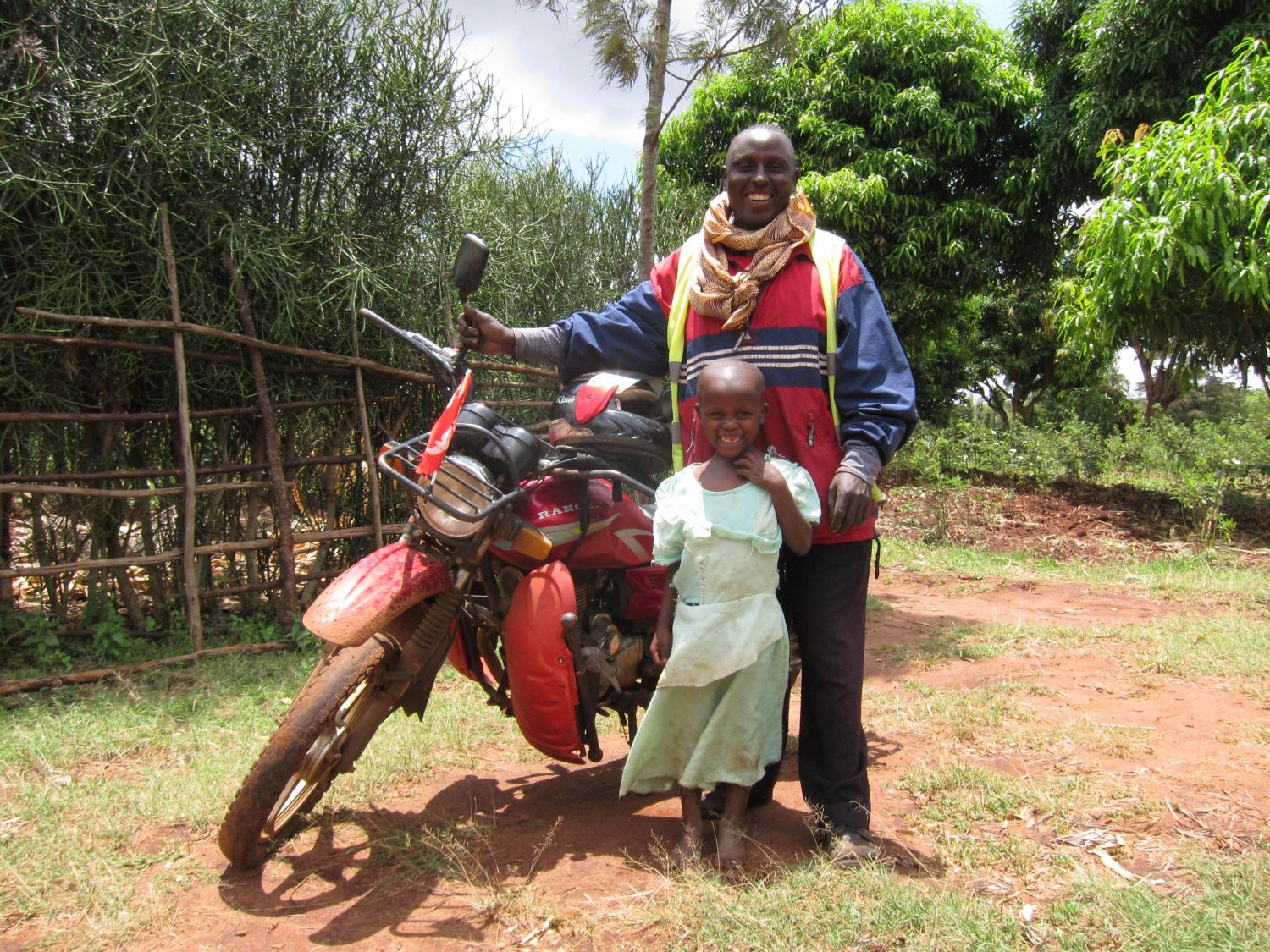
Nicholas and his daughter smiling with his boda boda at his home.

Eric on his piki piki that he uses to deliver bread he purchases from the bakery and resells to shops and schools.
Getting almost anywhere in Kenya is an ordeal and truly brings new meaning to the word “journey”. The same goes for our borrowers; they know the road to success is difficult. But like Eric says, he knows he can get there if he goes one step at a time. I know he will get there, especially with the support of Kiva lenders.
Think these guys work hard for their money? Loan to a hard-working boda boda drive in Kenya by clicking here.
'A journey of a thousand miles begins with the first step' -Laozi
PREVIOUS ARTICLE
Waste matter? There's no such thing →NEXT ARTICLE
New Field Partner: Plasticos Foundation makes surgery affordable for families in Guatemala →













